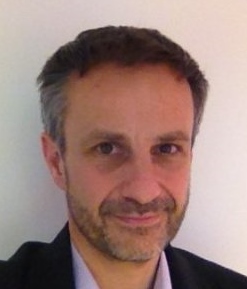The history the Equitable Access Initiative (EAI) is so far short, but complex. It was a seemingly straight forward proposition initiated by the Global Fund to fight AIDS, Tuberculosis and Malaria to find fairer alternatives to decisions on country eligibility for external financing for health solely based on economic income. However, since its launch in 2014, the initiative has lived five draft reports, the front opposition of over 200 global civil society organisations, and a mysterious descent into near secrecy. In the meantime, the main providers of Official Development Assistance (ODA) have increased their sole reliance on economic income to justify their pulling out from an ever greater number of countries.
As the numbers of poorer and marginalised people living in so called middle-income countries being abandoned by ODA skyrocket, never before were the premises behind the EAI more relevant. Yet, as the EAI has just produced what should be its final report, this op-ed enquiries the validity of the EAI proposition from the point of view of the key principle of equality in the access to health. The paper concludes that despite its stated intentions, the EAI is so far failing to deliver on proposing alternatives that guarantee equality in access to health. This added to criticism as to the lack of transparency and inclusiveness of the initiative and the limited leverage it has had to change the status quo, invite to a profound reflection as to its current validity and relevance

by Enrique Restoy, Phd *
Senior Technical Advisor: Human Rights at the International HIV/AIDS Alliance
The Equitable Access Initiative and the Principle of Equality
An initiative for a fairer distribution of external financing for health
The Equitable Access Initiative (EAI) was initially a proposal from the Global Fund to fight AIDS, Tuberculosis and Malaria (Global Fund) for a tiered-pricing initiative for health commodities. It has since derived into an endeavour to promote equitable access to external financing for health. It is currently convened by the Global Fund; the World Health Organization; the World Bank; Gavi, The Vaccine Alliance; UNAIDS; UNICEF; UNDP; UNFPA; UNITAID; with support from the Bill & Melinda Gates Foundation and the Wellcome Trust.[i]
The stated problem the EAI tries to help resolve is country classification by income been used to guide decision-making on official development assistance (ODA) and other external funding, including when deciding development assistance for health. This type of classification overlooks “important dimensions of development, such as poverty, inequality, and health need.” Conveners acknowledge that the middle-income country category (used to establish countries either non eligible to or transitioning out from receiving ODA and other external financing) already comprises over 100 countries, over 70 per cent of the world’s population and over 75 percent of worlds’ poor, as well as the majority of the global disease burden.[ii]
The EAI aims to develop a health framework based on a broader set of economic and health indicators to better inform decision making on health and development. The Initiative claims to be an extensive consultation process engaged government representatives, technical partners, civil society, the private sector, academic institutions and think tanks. As part of its deliverables, the EAI aims to explore “how to measure a) countries’ capacity for co-financing; b) in-country institutional capacity; and c) equitable access to health services and technologies as key components of health capacity that are replicable and can be used as coefficients for a new framework.”[iii]
Back in 2014, after several reports by the EAI, there were various points of concern among civil society organisations. As Prof. Baker, from Health Gap, pointed out, the initiative’s focus was narrowed down to countries which were transitioning into middle-income status, soon making them ineligible for most external funding for health. This meant that the initiative failed to include solutions for people who could not afford medicines in those countries with a low, lower and even upper middle-income status.
An associated major concern was that the initiative only contemplated partial solutions to pricing (tiered pricing, market segmentation), instead of dealing with contentious issues regarding profits for pharmaceutical companies, in particular, TRIPS flexibilities to allow wider competition to reduce prices. The initiative also failed to consider research and development of needed medicines separated from commercial considerations. Civil society organisations criticised the prominent place given to the pharmaceutical industry in the EAI despite its obvious conflict of interest, as well as the perceived secrecy in the development of the EAI.[iv]
Where is the EAI today?
In March 2016, the EAI produced its final draft report, which included the conclusions of four analytical groups commissioned to develop potential frameworks for consideration by the EAI stakeholders.[v] As with previous communications, the EIA’s diagnosis of the problem was thorough and comprehensive of the challenges of current ODA classifications based on country income. The final draft report found that Gross National Income (GNI) per capita was an imperfect measurement for understanding health needs and a government’s capacity to invest in health. It recommended that policymaking should not rely solely on a single variable to inform complex health financing decisions, and suggested considering health need relative to income levels, as well as domestic capacity and policies.[vi]
The four research teams feeding into the report considered that the World Banks’ income country classification system was inadequate to inform funding decisions on health as it failed to capture health need, inequity in income and health, and the capacity of governments to domestically finance health. They all explored multi-aggregate measures based on the consideration of several indicators including health access, financial protection and health system quality.
The final draft report linked its diagnosis with the recently adopted Sustainable Development Goals (SDGs) which are to frame international development for years to come. The EAI report hailed the strong focus of the SDGs on equality, non-discrimination and “leaving no-one behind” as this requires an explicit attention to the poorest and the most vulnerable “through a human rights-based approach that is rooted in giving all people the opportunity to achieve their right to life and equality”. [vii]
Are EIA’s proposals consistent with the principle of equality?
The general principle of equality and non-discrimination is a fundamental element of international human rights law. The right to equality can be defined as to the “right of all human beings to be equal in dignity, to be treated with respect and consideration, and to participate on an equal basis with others in any area of economic, social, political, cultural or civil life.”[viii] This principle is enshrined in the Universal Declaration of Human Rights and it guarantees that those in equal circumstances are dealt with equally in law and practice.[ix] Translated into health, the right to equality states that no-one should be discriminated against in the access to and in the provision of health care, and that no-one should be discriminated against in any area of life on the basis of their health status.[x]
At a first glance, the EAI appears to underpin equality as a pivotal element of any fair classification of external funding for health. The EAI signals that whatever the framework for ODA and other external financing, it should contribute to the principle of equality. According to the report: “For external health financing this could mean a greater focus on external determinants for health, reducing health disparities and the rights of vulnerable groups and key populations”.
However, the EAI’s proposed conceptual framework for classification on external health finance stemming from the four studies fails to explicitly consider equality and human rights indicators. The EAI instead proposes classification based on income level and health need on one hand, and domestic financing levels on the other. The report does recommend inequality indicators such as inequality-adjusted life expectancy, but it does not attempt to incorporate them arguing lack of reliable data. The same applies to human rights and inequity indicators as it considers that a better understanding of inequity would require to account for legal and social barriers, for which there is often no regular and reliable analysis.[xi]
In the absence of equality and equity indicators, a conceptual framework for a fairer classification for external financing for health is fatally limited.
The principle of equality is missing from the EAI’s framework in two other crucial points: the focus on countries instead of people (state-centred paradigm); and classification based on income and health need and domestic financing policies.
First, the state-centred paradigm. The report itself acknowledges that in many countries (including middle-income countries transitioning out of receiving ODA), health for key affected populations who are most marginalised and persecuted is almost entirely dependent on external sources of income. The case of populations affected by HIV is illustrative of this situation. Men who have sex with men and transgender people are among the populations at highest risk worldwide. However, homosexuality is criminalised in over 78 jurisdictions, where the LGBTI community is persecuted and discriminated against by their own governments.[xii] Most human right-based HIV programmes promoting the principle of equal access to health targeting these populations in both low and middle-income countries transitioning out of ODA are completely dependent on external financing. Without external resources, these programmes are bound to be abandoned.[xiii]
It should be expected that a central pursuit of the EAI would be to try to find solutions for the needs of people affected by disease in countries not allegeable to ODA under the current classification, but which are unable to access health due to gender and other inequalities and violations of their rights. These could be either in the form of frameworks that would allow for such funding to reach directly these key populations in such countries, bypassing hostile governments if necessary; or incentives to ensure governments removing inequalities and other human rights barriers for these populations to access health.
This is not the case, the EAI’s framework tries to help identify which country receives external financing for health and under which conditions, equating people needs with country needs and considering governments as custodians of these needs. This assumption disregards the fact that across the world the main source of inequality and discrimination are government’s policies and practices. The EAI therefore fails to question the state-centred paradigm in external financing for health. This constitutes a serious barrier for external funding to health accessing the millions of people in countries ineligible for ODA for health who are deprived from enjoying their right to health.
Second, the focus on income and health need and on domestic financing policies. Both these elements represent significant challenges from the point of view of equality.
Firstly, by focusing on income level and health need, the EIA is keeping the debate well within the economic capacity of countries, not far from the previous GNI classification. The EIA includes a consideration on health needs so that external funding for health is concentrated in countries where the burden of health is higher. This might have a public health rationale, but it does not make sense from an equality point of view. It discriminates people in need of health services on the basis of the disease burden in the country where they live. In the case of key populations largely marginalised and persecuted in countries with low burden disease, external funding for health would be contributing to perpetuating domestic discrimination against these populations instead of promoting equality. With this initiative, external funding would move away from these marginal populations on to areas of high burden disease, encouraging governments to do the same.
Secondly, the EAI focuses on domestic financing policies as a criterion for classification, and recommends comparing the capacity of each government to invest in health with the actual level of priority given to health. This consideration could work from the equality point of view if it was used to incentivise countries to increase their own investment in health for those key populations being excluded. However, the EAI recommendation does not go that far. It narrows its focus to broad budgetary priorities for health (in terms of proportion of total government expenditure), and current fiscal capacity of governments.
The recommendations provided by EIA therefore do little to address government policies and practices (both within health and generally) which undermine equal access to health for certain key populations and/or foster inequality and discrimination against people based on their health status. The initiative’s remit is logically not on the how to address these issues, but on helping deciding on who should be eligible to external funding. However, if considerations as to who is being excluded form health and the reasons behind that exclusion are not made, as it is currently the case under the EAI, one might find utterly undesirable scenarios.
Take for example a greatly simplified case where middle-income country X, currently not eligible for external health financing. Country X’s laws and policies discriminate against people living with and vulnerable to a particular disease. However, country X’s disease burden is very high and the country is highly indebted and therefore would be eligible for external funding to health under EAI’s recommendations. Without further provisions, such funding would not reach the intended population. Such funding would foster inequality whilst its effectiveness in terms of health outcomes would be seriously undermined by discriminatory laws and practices.
Conclusion: a call for a profound reflection on the EAI process
Despite its stated intentions, the EAI is so far failing to deliver on proposing alternatives that guarantee equality in access to health for those who are excluded from it whatever country they are. This is an important enough point calling for a reflection on the validity of the EAI as the right mechanism to overcome classifications for external financing for health based on macroeconomic indicators alone. This is reflected in the fact that even some of the conveners of the EAI, for example the Global Fund, are developing their own people-centred criteria to be able to keep supporting access to health services for populations at higher risk of both disease and human rights violations, including discrimination. The Global Fund is considering countries otherwise transitioning out of Global Fund funding to scale up financing for programmes to address discrimination, gender inequality, and other human rights-related barriers to accessing HIV, TB and malaria services.[xiv]
The call for further reflection about the EAI, both in terms of process and the alternatives it currently proposes is also underpinned by the fact that the EAI remains largely unknown to a large number of global health actors, especially civil society. EAI’s premises and proposals were not present in debates leading to the adoption of the SDGs in 2015, they are also currently absent from negotiations that will lead to the adoption of the 2016 Political Declaration on HIV/AIDS.
It is high time to take stock on what is needed for a truly fair classification and distribution of external financing that consider global health issues holistically. This distribution should consider the interconnection of controversial but crucial issues affecting people’s access to health, such as intellectual property rights and pricing in health, power imbalances, lack of transparency in health-related decision making processes, interference of political and commercial interests and lobbies with public health decisions, and other key issues in global and national health governance. Above all though, any new classification of external financing for health must focus on the health-related needs and rights of all persons without discrimination. Whoever they are, whatever country they are in.
References
[i] The Equitable Access Initiative, overview. Accessed on 13 April 2016.
[ii] Global Fund, Equitable access Initiative, GF/B31/ER8 For Board Information, Electronic Report to the Board, accessed on 20 May, 2016.
[iii] The Global Fund, terms of reference of the Equitable Access Initiative. Accessed on 25 April 2016.
[iv] Critical Analysis of Global Fund’s Proposed Equitable Access Initiative: GF-B31-ER8, Prof. Brook K. Baker, Northeastern U. School of Law, Senior Policy Analyst, Health GAP May 16, 2014
[v] University of Oxford, University of Sheffield-Imperial College, Norwegian Institute for Public Health, and Institute of Health Metrics and Evaluation at University of Washington. The findings of each group are available at www.theglobalfund.org/en/equitableaccessinitiative/, accessed on 2 April 2016.
[vi] The Equitable Access Initiative, Final Report: Draft version as of 4 March 2016, accessed on 31 May 2016.
[vii] The Equitable Access Initiative, Final Report: Draft version as of 4 March 2016, accessed on 31 May 2016.
[viii] The Equal Rights Trust, Declaration of principles on equality, (2008:5).
[ix] United Nations General Assembly, Universal Declaration of Human Rights (art 2), New York, 1948.
[x] Petrova, D., ‘A Right to Health Equality, What Does this Mean, Exactly?’, The Equal Rights Review, Vol. Six (2011).
[xi] The Equitable Access Initiative, Final Report: Draft version as of 4 March 2016, accessed on 31 May 2016.
[xii] Global Commission on HIV and the Law, HIV and the law, Risks, Rights and Health, July 2012.
[xiii] Restoy, E., Quantifying the impact of human rights and gender programmes, International HIV/AIDS Alliance, April 2016.
[xiv] Jürgens, R., ‘If we want to end HIV, TB, and malaria, we need to do more to reduce human rights barriers’, Global Fund Observer, AIDSPAN, 11 May 2016.
———————————————
* Enrique Restoy is Senior Technical Advisor: Human Rights at the International HIV/AIDS Alliance. He has previously held senior positions in Anti-Slavery International and the Coalition to Stop the Use of Child Soldiers and as a Researcher for West Africa in Amnesty International. He is a member of the Human Rights Reference Group of the Global Fund to fight AIDS, TB and Malaria and sits in the Advisory Boards of School of Global Studies of the University of Sussex, UK and of Sexual Minorities Uganda (SMUG). Enrique holds a doctoral degree from the University of Sussex.



